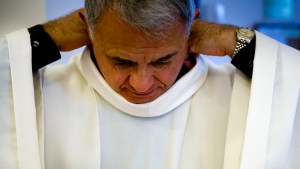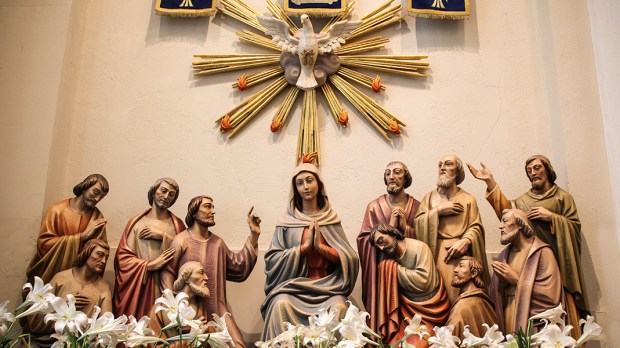In English countries, the Christian feast of Pentecost is often called by another name: Whitsunday. Why is that?
The English term is principally derived from a practice in the early Church that made the celebration of Pentecost similar to the Easter Vigil. There was a service called “Whitsun Eve” where the catechumens who had not been baptized at Easter received the sacrament on the eve of Pentecost. Similar to the Easter Vigil, it was celebrated in a “night watch” liturgy that included the reading of six prophecies and a solemn blessing of the baptismal font.
After the celebration of Baptism, the newly baptized would be vested in a white alb, symbolizing their new birth in the life of grace.

Read more:
Why do priests wear white albs?
The Merriam-Webster Dictionary confirms the etymology of the word, explaining how “Whitsunday [is derived from the] Middle English Whitsonday, from Old English hwīta sunnandæg, literally, white Sunday; probably from the custom of wearing white robes by those newly baptized at this season.”
With this in mind, Pentecost is closely connected to the celebration of Easter and the coming of the Holy Spirit is emphasized in relation to the Sacrament of Baptism.
So even though priests wear red on this day, the ancient baptismal celebrations on Pentecost explain why it is traditionally called “Whitsunday.”

